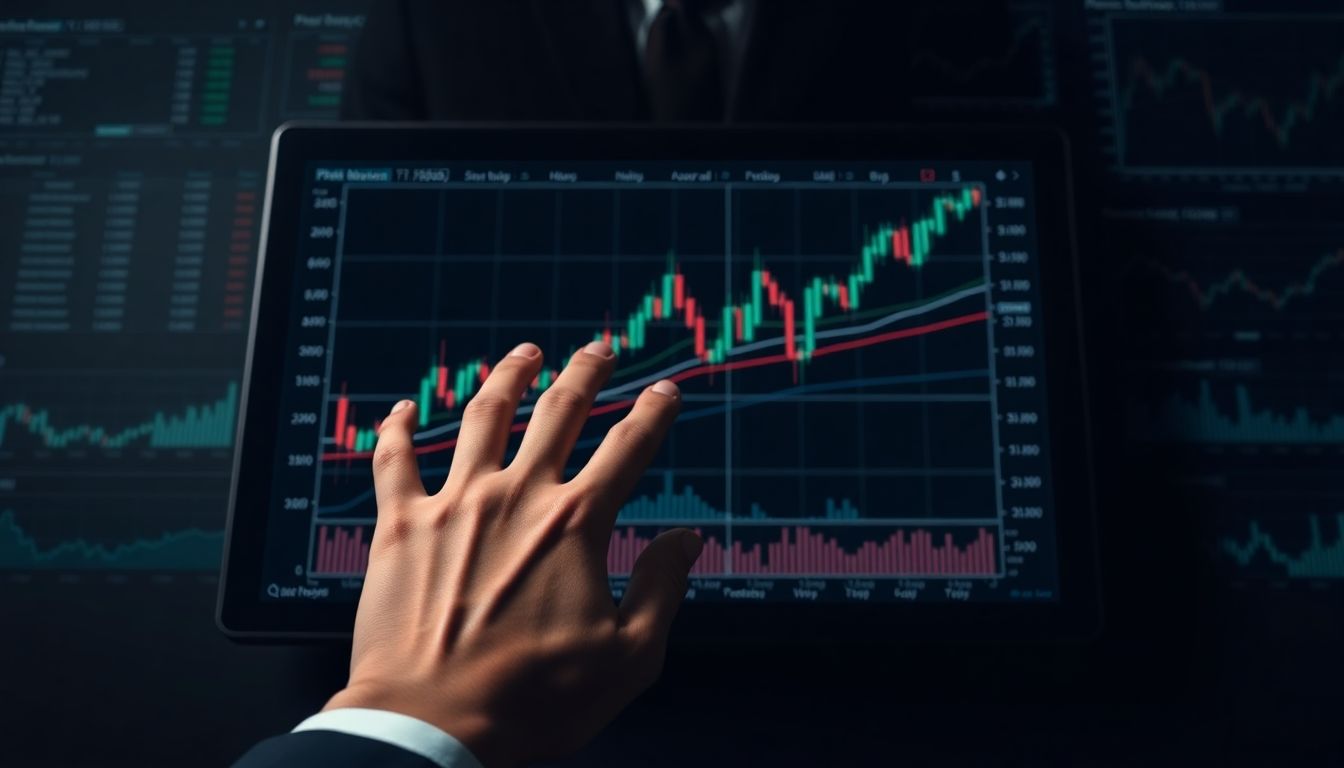Ever gotten the feeling you’re doing all the right things in trading and still losing money? Don’t worry, you’re not alone. A lot of traders are stuck in the same boat, spending hours researching only to watch their accounts dwindle. These failures can be costly and frustrating.
This article is going to reveal to you the 10 most common mistakes traders make. Better yet, you’ll find out how to avoid them. Take these tips, and you’ll enhance your game in trading.
Mistake #1: No Trading Plan
Picture constructing a house without blueprints. It’d be a disaster, right? Trading without a plan is equally dangerous. A good trading plan is your guide. It tells you what to do and when to do it.
Setting Your Trading Goals
What do you expect to gain by trading? Set some realistic money objectives. What kind of returns are you hoping for? How much cash do you wish to make? Match your objectives to your risk tolerance. Do you feel comfortable with large swings, or do you want a gradual rise? Ensure you understand these things!
Creating a Trading Plan
Day trading? Swing trading? Value investing? There are many strategies. Choose one that suits your personality and capital. Study the strategy well. Learn its rules and signals. Backtest it with historical data. This process builds your confidence and helps you refine your game plan.
Rules of Risk Management
Guard your capital! Risk management is the most important thing. Utilize stop-loss orders to restrict possible losses. Establish the appropriate position size for every trade. Spread your portfolio among several assets. This will enable you to minimize the effect of any individual trade going wrong.
Error #2: Trading Through Emotion
Fear, greed, hope. Emotions can ruin a trade. These emotions blur judgment. They cause hasty decisions. Don’t let your heart decide.
Recognizing Emotional Triggers
What makes you nervous or excited when trading? Identify typical triggers, for example, a string of losses or an unexpected price rise. Identify what can impair your judgment. When these emotions come up, stop. Don’t do anything in haste.
Applying Emotional Control Methods
Try meditation. Practice being in the moment. Or, log off. These techniques can be used to control emotions. Take a step back when stressed. Refresh your mind. Return with a clearer mind.
Following the Plan, Even When it’s Difficult
Self-discipline is needed. Avoid letting yourself stray from your trading plan. This is particularly crucial during turbulent periods. Have faith in your strategy. Stick to your guidelines. Do not pursue quick profits or revenge trading.
Mistake #3: Overlooking Risk Management
Consider risk management your safety net in trading. It is critical to long-term success. Guard yourself. Without it, a single bad trade would destroy you.
Calculating Risk Tolerance
How much can you lose on a given trade? Establish your risk tolerance. Make it contingent on your financial position. Keep your investment objectives in mind. A good rule of thumb is to only risk 1-2% of your capital on one trade.
Setting Stop-Loss Orders
Where should you put your stop-loss orders? Use levels based on technical analysis or volatility. A stop-loss order closes your position automatically when the price is at a certain level. Use it to curtail losses. Preserve your capital.
Position Sizing Strategies
How much should you buy? Position sizing is important. Various techniques are available, including fixed fractional or the Kelly Criterion. Both have varying effects on risk. Learn about them. Then, pick the one best suited to your risk profile.
Mistake #4: Overtrading
Overtrading involves trading excessively. It raises commissions. It may lower your win rate. Just think of it as quantity versus quality.
Recognizing the Signs of Overtrading
Are you in and out of positions all the time? Do you have a constant urge to be in action? These are signs of overtrading. If you are forcing trades, take a step back. You might be overtrading.
Creating a Trading Schedule
Set specific trading hours. Limit the number of trades per day. A schedule can help you avoid impulsive actions. Stick to your plan. Only trade during your set times.
Focusing on Quality Over Quantity
Wait for high-probability setups. Don’t force trades just to be active. Patience is key. Quality trades are better than many bad ones. Look for the best setups that follow your strategy.
Mistake #5: Not Keeping a Trading Journal
A trading journal is a diary for your trades. It allows you to look at what you’re doing wrong and what you’re doing right. You can use this to improve.
What to Write in Your Journal
Record everything about a trade. Put down the entry and exit price. Write down your reasons for the trade. Put down how you felt at the time too. The more information the better.
Analyzing Your Trading Performance
Use your journal to recognize patterns. What do you do well? What don’t you do so well? Are there strategies that work better? Look for clues that can make you a better trader.
Using Data to Fine-Tune Your Strategy
Change your trading parameters according to data. Enhance your profitability. Your journal is a treasure trove of data. Use it to fine-tune your method.
Mistake #6: Not Being Flexible to Market Conditions
Markets evolve. Strategies have to follow suit. What is effective in one market can be a failure in another. Stay ahead of the markets.
Recognizing Market Trends
Uptrend? Downtrend? Sideways? Learn to recognize various trends. Employ technical analysis. Then shift your strategies accordingly.
Shifting Strategies According to Volatility
Volatility affects your trading. Higher volatility means bigger swings. Lower volatility means smaller moves. Modify your strategies based on these levels. For instance, you might tighten stop-loss orders during low volatility.
Staying Informed About Market News
Keep up with economic news. Know about earnings reports. Be aware of other market-moving events. News can cause sudden price changes. So, stay informed to anticipate and react accordingly.
Conclusion
So, you’ve read about 10 most typical trading errors. Now you know how not to make them. Keep in mind that trading is a learning process. Keep learning. Keep evolving. It is time to make a more successful trading journey!














